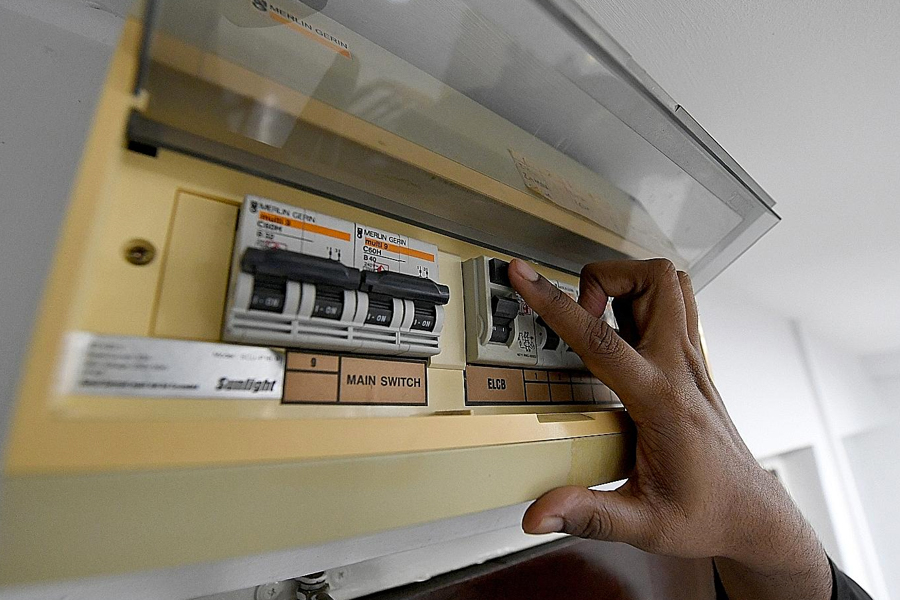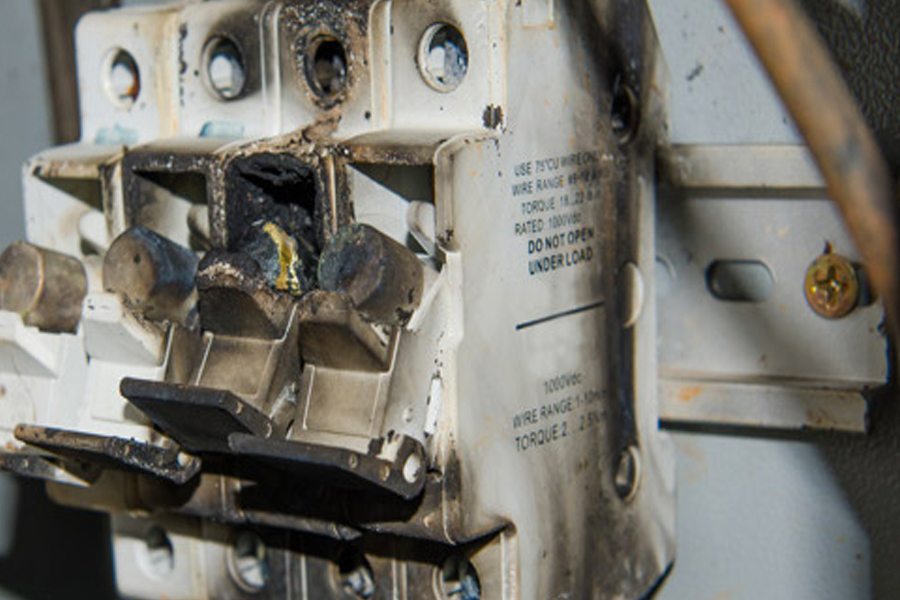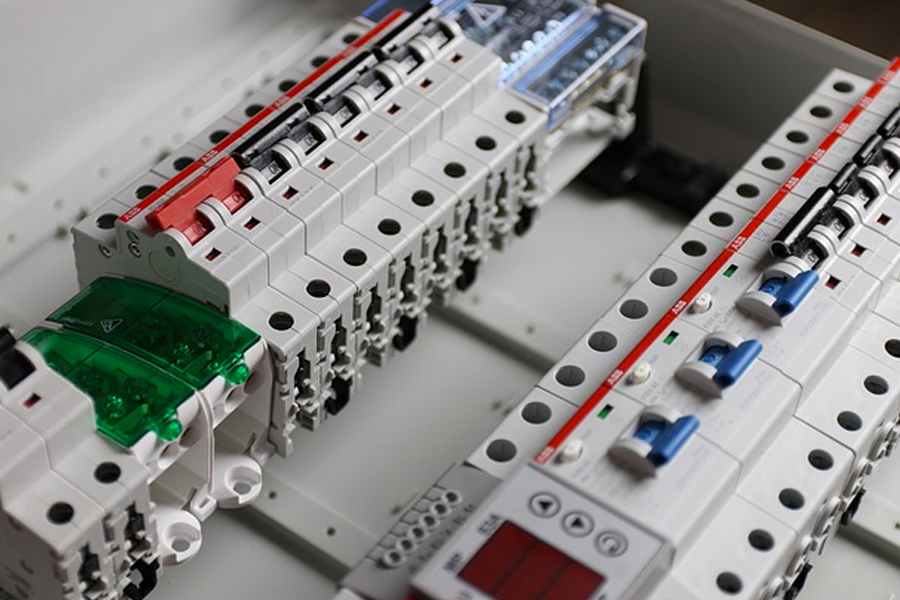Circuit breaker installation and repair services for commercial, residential or industrial properties
CIRCUIT BREAKER SERVICES
Circuit Breaker Services
Located within the box or electrical panel of the distribution board (DB), circuit breakers play an important role in protecting the entire electrical wiring network of a house or office. Tripped breakers happen because they stop any electrical explosion that could lead to house fires and other hazards.
One of the most critical components of an ideal electrical wiring network is the circuit breaker. In the electrical panel or distribution box, a circuit breaker is placed to avoid electrical spikes and other hazards that could damage a building’s electrical faults. Circuit breakers are designed for high quality and can withstand accidents such as electrical wiring melting or damage to other equipment which usually occur during power trips.
There are several circuit breaker advantages that make them an essential part of the electrical system of each house. Circuit breakers have faster response, more flexibility, and therefore quite effective compared to fuses. You can also quickly reset circuit breakers so you can continue to use them for an extended period. The effectiveness of these critical electrical components, however, depends heavily on how they have installed and the conditions under which they are used.
Our professional electricians provide a variety of electrical services to remove, fix and mount circuit breakers. Should you spot any possible circuit breaker problems coming up, do not hesitate to contact us.
Common Circuit Breaker Problems
There are several explanations why circuit breakers fly, but tripping is only one circuit breaker problem faced by most HDBs in Singapore.
Bad Wiring
One of the most common circuit breaker issues faced by homeowners is poorly mounted electrical wiring. Poor wiring can lead to power failures due to several problems such as flickering lights. While you can attach and repair obvious loose wiring on your own, a licensed electrician can inspect more serious issues in HDB circuit breakers.
Overloading
Not only can overloading lead to power failures or power trips, but it can also cause house fires and severe injury. Several symptoms of overloaded circuits are as follows:
- Overheating power sockets and electrical breakers
- Frequently tripped breakers
- Use of several extension cords
Short Circuits
Short circuits happen when electricity passes through an incorrect direction abruptly, most likely one with the least resistance. Including damaged electrical appliances, the circuit breaker itself may also be affected by short circuits. Here are a short circuit signs:
- Faulty electrical circuit breakers
- Frequently tripped breakers
Preventing Circuit Breaker Trips
We’ve all experienced it in our HDB flats – troubling circuit breaker trips that seem to occur so often. Although investing in a skilled electrician’s services to solve the problem is necessary, there are also ways to prevent circuit breaker trips.
Why Does a Circuit Breaker Trip?
If you’re not particularly used to electrical work methods, then perhaps you don’t know exactly why a HDB circuit breaker trips. But in most situations, if the current flowing through it reaches the amps that your device can accommodate, circuit breakers are more likely to travel. Simply put, if the system gets overwhelmed, an electrical trip occurs.
Tips to Prevent Circuit Breaker Trips
There are different safety tips you should follow to avoid an electrical trip in your home.
You must correctly unplug non-used electrical appliances. It’s because, although they are switched off, electricity can still stream through electrical wirings in an appliance. You should be mindful of how many electrical appliances, such as warm seasons, you have plugged in during unique times of the year. Appliances such as air conditioners claim to be “heat suckers,” a cause of an HDB circuit breaker.
If you only have a few power outlets in your house, try spreading the largest consumer of energy around. Only having few power points at home can be annoying, especially when multiple appliances need to be used at once. But do not use an extension plug that will inevitably overwhelm the electrical system and eventually lead to an HDB circuit breaker.
In addition, ensuring that none of the electrical appliance cords in your home is compromised or damaged, burned, scorched or frayed is also important and significant to you. Hold the cords in the best possible shape.



Troubleshooting Your Circuit Breaker
Struggling at home from constant power outages? Before you contact a licensed electrician in Singapore, you can follow these simple steps when troubleshooting your HDB circuit breaker.
- Find the tripped circuit breaker in the distribution board (DB) box. A tripped breaker lever is usually located near the ON and OFF switch.
- Turn off the lights and other appliances as the lights and other electrical appliances must first be switched off before following the next step as it can lead to a sudden electrical surge.
- Test the electrical breaker by moving the lever back to the ON location from the OFF and bear in mind how loose it is. If the lever is loose, it means that the lever is faulty. It circuit breaker will then need to be repaired. Otherwise, take the next steps below for troubleshooting.
- Switch off your lights and appliances again
- Finally, turn off your lights and appliances all at once. If a tripped breaker occurs, continue to troubleshoot.
Check the electrical panel
Identify and shut off the main power circuit breaker delivering electrical power to the box or electrical panel of your control board (DB). Test the associated electrical wiring of the tripped breaker and check for any signs of damage such as a loose connection, corrosion, and other problems. If you have found problems like this, immediately replace your circuit breaker. If there is a loose connection, use a screwdriver to secure it and reset the circuit breaker. So, if it starts to slip, keep troubleshooting.
Check your electrical wiring
Use a screwdriver to distinguish the black or “cold” wire from the terminal of the breaker. To stop it from touching other wires or metal surfaces, disconnect it from the electrical breaker. Then the main power breaker can be switched on.
Test your circuit breaker for the required voltage
Inside the main electrical panel, connect a 120-140 volt tester sample to a bare copper ground wire. Do this by pressing the other probe to the “warm” wire end. You will then need to remove the circuit breaker if a correct amount of voltage is detected.



Our Circuit Breaker Solutions
Just as there are different types of circuit breakers, there are also variations between the problems faced on the parts. Among the common problems that usually occur from time to time, an electrician can solve quickly. Other common hitches, however, can also be very difficult to spot and resolve. Nonetheless, all of these issues require immediate and effective resolution to keep your home safe and reduce the cost of service.
We are the experts in installing, fixing and removing circuit breakers in Singapore. We know the best approaches to mount, repair and replace all types of circuit breakers, including magnetic circuit breakers, thermal circuit breakers and residual current circuit breakers, thanks to our expertise and experience in electrical engineering services.

